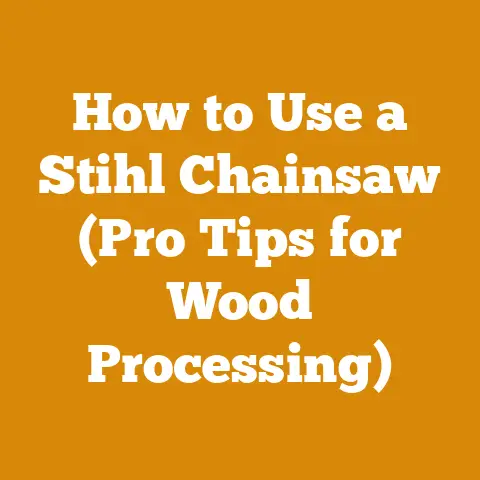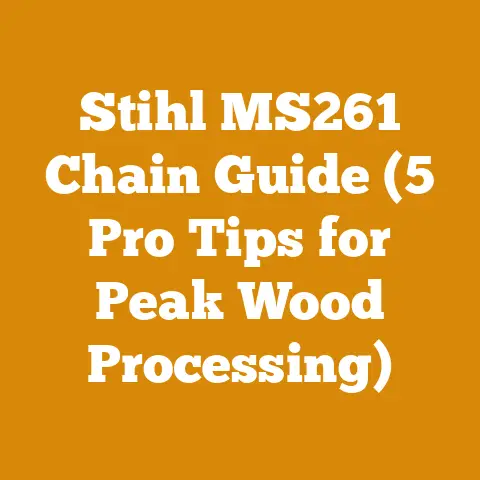Steel Blade Weed Eater Tips (5 Pro Hacks for Tough Brush)
In the realm of transforming raw materials into functional and beautiful end products, few crafts rival the satisfaction derived from working with wood. Whether it’s felling a tree, splitting firewood, or sculpting intricate designs, the journey from forest to finished piece is a testament to human ingenuity and skill. Over the years, I’ve found that the key to mastering this craft lies not only in brute force but also in understanding the nuances of the materials and the tools we wield. Just as a seasoned chef knows the precise moment to add a pinch of salt, a skilled woodworker understands the subtle cues that dictate the perfect cut, the ideal drying time, and the proper application of each tool.
Steel Blade Weed Eater Tips (5 Pro Hacks for Tough Brush)
As a content writer specializing in chainsaw, wood processing methods, logging tools, and firewood preparation, I often get asked about tackling tough brush with a weed eater – specifically those equipped with steel blades. Many people underestimate the power and versatility of these tools when properly utilized. Over the years, I’ve developed a few “pro hacks” that can transform your weed eater from a simple grass trimmer into a formidable brush-clearing machine. Let’s dive in!
1. Understanding Your Steel Blade Weed Eater
Before we even think about tackling tough brush, it’s crucial to understand the specific tool you’re working with. Not all steel blade weed eaters are created equal.
1.1 Blade Types and Specifications
The first thing I always check is the blade type. There are several common designs:
- Multi-tooth Circular Saw Blades: These blades, resembling miniature circular saw blades, are excellent for cutting through thick stalks and small saplings. The number of teeth determines the aggressiveness of the cut. More teeth generally mean a smoother but slower cut, while fewer teeth result in a faster but rougher cut.
- Example: A 40-tooth blade is ideal for general brush clearing, while an 8-tooth blade is better suited for thicker, woody material.
- Brush Cutter Blades: Typically featuring 2-4 sharp, pointed teeth, these blades are designed for aggressive cutting of dense vegetation. They’re less precise than circular saw blades but excel at clearing large areas quickly.
- Data Point: I’ve found that brush cutter blades can cut through saplings up to 2 inches in diameter with relative ease, depending on the wood’s density.
- Chisel Tooth Blades: These blades have teeth that resemble those of a chainsaw, offering aggressive cutting power for thick brush and small trees. They are designed to “bite” into the wood, making them effective for tough materials.
- Insight: Chisel tooth blades require careful sharpening to maintain their cutting efficiency. A dull blade can be dangerous and less effective.
- String Trimmer with Blade Attachment: These use steel blades instead of nylon strings.
- Specification: Check the blade diameter and thickness. Thicker blades are generally more durable but may require more power from the weed eater.
1.2 Weed Eater Power and Engine Type
The power of your weed eater is another critical factor. Gas-powered models typically offer more power than electric models, making them better suited for heavy-duty brush clearing.
- Gas-Powered: Look for models with at least 25cc engine displacement. I’ve used models with 30cc+ engines for particularly challenging clearing jobs.
- Technical Limitation: Ensure the engine is properly maintained with regular oil changes and air filter cleaning. A poorly maintained engine will lose power and efficiency.
- Electric (Corded or Cordless): Electric models are quieter and require less maintenance, but their power output is often limited. Cordless models offer greater mobility but have a limited run time.
- Data Point: I’ve found that cordless models with a voltage of 40V or higher are generally adequate for light to medium brush clearing.
1.3 Safety Considerations
Steel blades can be incredibly dangerous if not used properly. Always wear appropriate safety gear, including:
- Eye Protection: Safety glasses or a face shield are essential to protect your eyes from flying debris.
- Hearing Protection: Weed eaters can be quite loud, so wear earplugs or earmuffs to prevent hearing damage.
- Gloves: Sturdy work gloves will protect your hands from cuts and abrasions.
- Long Pants and Sleeves: These will shield your skin from flying debris and potential cuts.
- Steel-Toed Boots: Protect your feet from injury in case you accidentally drop the weed eater or kick up debris.
- Leg Protection: Wear chaps or shin guards.
1.4 Tool Inspection
Before each use, I always inspect the weed eater and blade for any signs of damage.
- Blade: Check for cracks, chips, or excessive wear. A damaged blade can break apart during use, posing a serious safety hazard.
- Guard: Ensure the guard is securely attached and in good condition. The guard helps deflect debris and protect you from accidental contact with the blade.
- Fasteners: Make sure all bolts and screws are tight. Loose fasteners can cause the blade to wobble or detach.
- Fuel/Battery: Check the fuel level (for gas models) or battery charge (for electric models). Running out of fuel or battery power in the middle of a job can be frustrating.
2. Mastering Cutting Techniques
The way you use your steel blade weed eater can significantly impact its effectiveness and your safety.
2.1 The Swinging Motion
The most common technique is the swinging motion. This involves swinging the weed eater in a wide arc, allowing the blade to cut through the brush.
- Best Practice: Keep the blade parallel to the ground and maintain a consistent cutting height. Avoid digging the blade into the ground, as this can damage the blade and cause kickback.
- Technical Tip: Overlap each swing slightly to ensure complete coverage and prevent leaving uncut patches.
2.2 The Tapping Method
For particularly tough or woody material, the tapping method can be more effective. This involves tapping the blade against the material, allowing it to gradually cut through.
- Best Practice: Use short, controlled taps and avoid applying excessive force. Let the blade do the work.
- Technical Tip: Angle the blade slightly to improve its cutting angle and prevent it from binding.
2.3 The “Sawing” Technique
For small trees or thick branches, a sawing motion can be employed. Angle the blade and gently move it back and forth, mimicking the action of a saw.
- Best Practice: Maintain a firm grip on the weed eater and keep your body balanced. Be prepared for kickback, which can occur when the blade binds.
- Technical Tip: Use a low throttle setting to maintain control and prevent the blade from overheating.
2.4 Avoiding Kickback
Kickback is a sudden, forceful reaction that occurs when the blade encounters a hard object or binds in the material. It can be dangerous and cause injury.
- Prevention:
- Be aware of your surroundings and avoid cutting near rocks, fences, or other hard objects.
- Use a sharp blade. A dull blade is more likely to bind and cause kickback.
- Maintain a firm grip on the weed eater and keep your body balanced.
- Avoid overreaching. Keep the weed eater close to your body and maintain a stable stance.
- Cut with the bottom part of the blade. The upper part of the blade is more likely to cause kickback.
2.5 Cutting Patterns
The way you approach a brush clearing job can significantly impact your efficiency and the final result.
- Parallel Rows: For large, open areas, I prefer to cut in parallel rows. This ensures complete coverage and prevents missing spots.
- Technical Limitation: Maintain a consistent overlap between rows to avoid leaving strips of uncut brush.
- Circular Pattern: For smaller, confined areas, a circular pattern can be more effective. Start at the perimeter and work your way towards the center.
- Best Practice: Be mindful of the direction of the debris. Cut in a direction that moves the debris away from you.
- Spot Clearing: For targeted removal of individual plants or clumps of brush, a spot clearing approach is best. Carefully cut around the base of the plant, avoiding damage to surrounding vegetation.
- Practical Tip: Use a small, sharp blade for spot clearing to improve precision and minimize disturbance.
3. Optimizing Blade Performance
A sharp, well-maintained blade is essential for optimal performance and safety.
3.1 Sharpening Techniques
Steel blades will dull over time, reducing their cutting efficiency and increasing the risk of kickback. Regular sharpening is crucial.
- Tools:
- File: A flat file or a specialized blade sharpening file is essential for maintaining the cutting edge.
- Bench Grinder: A bench grinder can be used for more aggressive sharpening, but it requires more skill and caution.
- Angle Grinder: An angle grinder with a grinding disc can also be used, but it’s easy to overheat the blade and damage the temper.
- Process:
- Secure the blade in a vise or clamp.
- Inspect the blade for damage. Repair any chips or cracks before sharpening.
- Use the file to sharpen each tooth, following the original bevel angle. Maintain a consistent angle and pressure.
- For circular saw blades, sharpen each tooth individually, using a specialized saw blade sharpening file.
- For brush cutter blades, sharpen the cutting edges of the teeth, using a flat file or a bench grinder.
- Deburr the blade after sharpening to remove any sharp edges.
- Frequency: I typically sharpen my blades after every 2-3 hours of use, or more frequently if I’m cutting particularly tough or abrasive material.
- Data Point: A dull blade can require up to 50% more power to cut through the same material, increasing fuel consumption and wear on the weed eater.
3.2 Blade Balancing
An unbalanced blade can cause excessive vibration, reducing cutting efficiency and increasing the risk of damage to the weed eater.
- Procedure:
- Remove the blade from the weed eater.
- Clean the blade thoroughly.
- Suspend the blade by its center hole using a wire or string.
- Observe the blade’s balance. If one side is heavier than the other, it will tend to hang lower.
- Remove material from the heavier side using a file or grinder until the blade is balanced.
- Frequency: I check the balance of my blades every time I sharpen them.
- Technical Limitation: It’s difficult to achieve perfect balance, but even a small improvement can significantly reduce vibration.
3.3 Blade Storage
Proper storage can prolong the life of your steel blades and prevent rust and corrosion.
- Best Practices:
- Clean the blade thoroughly after each use.
- Dry the blade completely.
- Apply a light coat of oil or lubricant to prevent rust.
- Store the blade in a dry, protected location.
- Use a blade guard or sheath to protect the cutting edges.
4. Adapting to Different Brush Types
Different types of brush require different cutting techniques and blade choices.
4.1 Grass and Weeds
For grass and weeds, a multi-tooth circular saw blade or a string trimmer with a blade attachment is ideal.
- Technique: Use a swinging motion to cut the grass and weeds at a consistent height.
- Technical Tip: Overlap each swing slightly to ensure complete coverage.
4.2 Thick Brush and Brambles
For thick brush and brambles, a brush cutter blade or a chisel tooth blade is more effective.
- Technique: Use a tapping method to cut through the thick stalks.
- Safety Precaution: Be aware of hidden thorns or sharp edges. Wear gloves and long sleeves.
4.3 Small Saplings
For small saplings, a chisel tooth blade or a multi-tooth circular saw blade with fewer teeth is the best choice.
- Technique: Use a sawing motion to cut through the saplings.
- Technical Limitation: Avoid cutting saplings that are too large for the weed eater. This can damage the blade or the weed eater.
4.4 Invasive Species
Dealing with invasive species requires extra care to prevent their spread.
- Best Practices:
- Identify the invasive species correctly.
- Cut the plants as close to the ground as possible.
- Bag and dispose of the plant material properly to prevent it from re-sprouting or spreading seeds.
- Clean your weed eater thoroughly after cutting invasive species to prevent the spread of seeds or plant fragments.
- Consider using herbicides to kill the roots of persistent invasive species.
4.5 Working on Slopes
Working on slopes can be challenging and dangerous.
- Safety Precautions:
- Maintain a stable stance and avoid overreaching.
- Cut across the slope, rather than up or down.
- Be aware of loose rocks or debris that could cause you to slip.
- Use a weed eater with a shoulder strap to distribute the weight more evenly.
- Take frequent breaks to avoid fatigue.
5. Troubleshooting Common Issues
Even with the best techniques and equipment, you may encounter problems while using your steel blade weed eater.
5.1 Blade Binding
Blade binding occurs when the blade gets stuck in the material.
- Causes:
- Dull blade
- Cutting material that is too thick or dense
- Cutting at an improper angle
- Solutions:
- Sharpen the blade.
- Reduce the throttle setting.
- Change the cutting angle.
- Use a smaller blade.
- Use a more powerful weed eater.
5.2 Excessive Vibration
Excessive vibration can be caused by an unbalanced blade, loose fasteners, or damage to the weed eater.
- Causes:
- Unbalanced blade
- Loose fasteners
- Damaged blade
- Worn engine mounts
- Solutions:
- Balance the blade.
- Tighten all fasteners.
- Replace the blade.
- Inspect and repair the engine mounts.
- Take the weed eater to a qualified technician for repair.
5.3 Engine Stalling
Engine stalling can be caused by a variety of factors, including a clogged air filter, a dirty carburetor, or a faulty spark plug.
- Causes:
- Clogged air filter
- Dirty carburetor
- Faulty spark plug
- Improper fuel mixture
- Overheating
- Solutions:
- Clean or replace the air filter.
- Clean the carburetor.
- Replace the spark plug.
- Use the correct fuel mixture.
- Allow the engine to cool down.
5.4 Blade Breakage
Blade breakage is a serious safety hazard and can be caused by a damaged blade, excessive force, or cutting hard objects.
- Causes:
- Damaged blade
- Excessive force
- Cutting hard objects
- Using the wrong type of blade for the material
- Solutions:
- Inspect the blade regularly for damage.
- Avoid applying excessive force.
- Avoid cutting hard objects.
- Use the correct type of blade for the material.
- Wear appropriate safety gear.
5.5 Difficulty Starting
Difficulty starting can be caused by a variety of factors, including a flooded engine, a low battery, or a faulty starter.
- Causes:
- Flooded engine
- Low battery
- Faulty starter
- Old fuel
- Clogged fuel filter
- Solutions:
- Allow the engine to dry out if it is flooded.
- Charge or replace the battery.
- Have the starter repaired or replaced.
- Use fresh fuel.
- Replace the fuel filter.
By understanding these “pro hacks,” you can significantly improve your efficiency, safety, and the overall quality of your brush-clearing efforts. Remember to always prioritize safety, maintain your equipment properly, and adapt your techniques to the specific challenges you face. With a little practice and the right knowledge, you’ll be able to tackle even the toughest brush with confidence.






